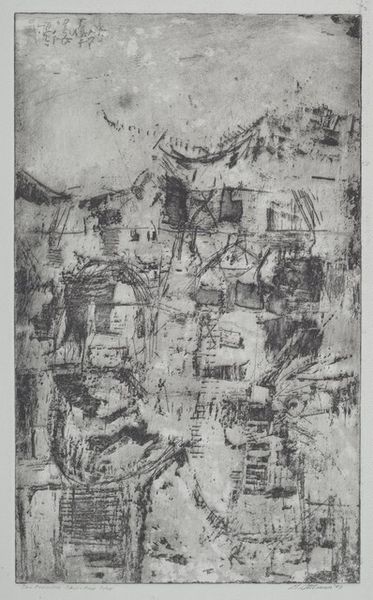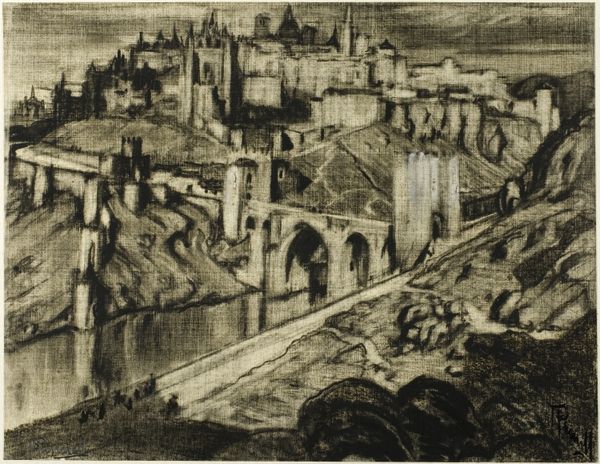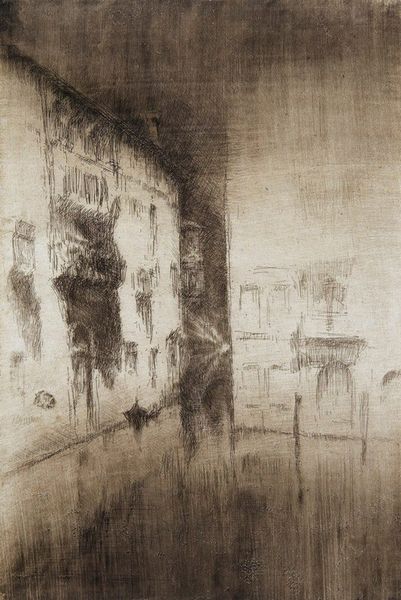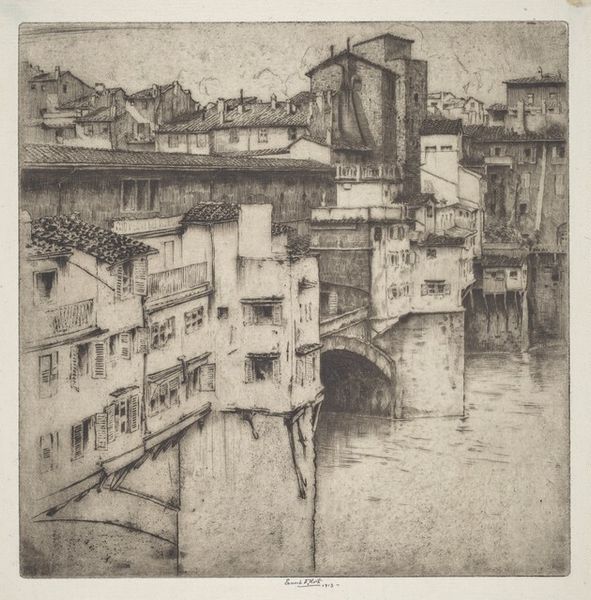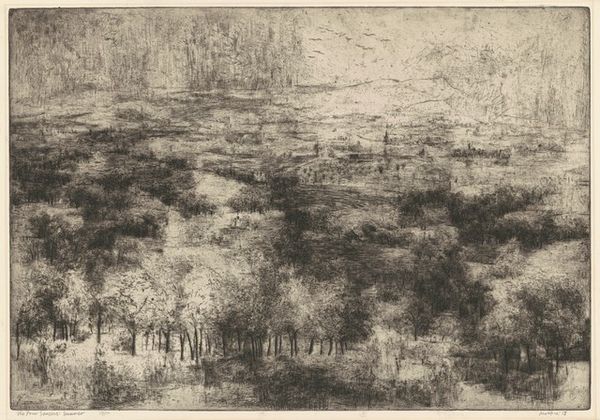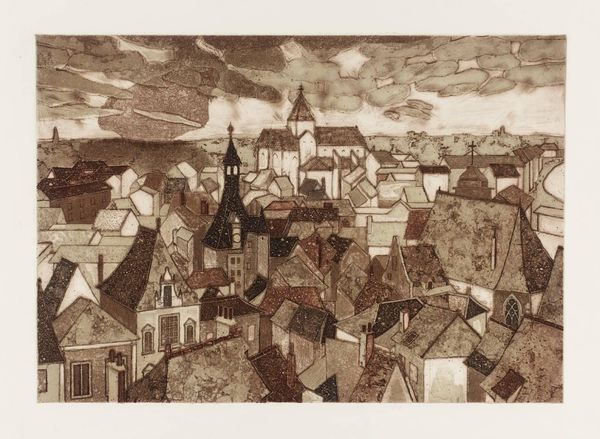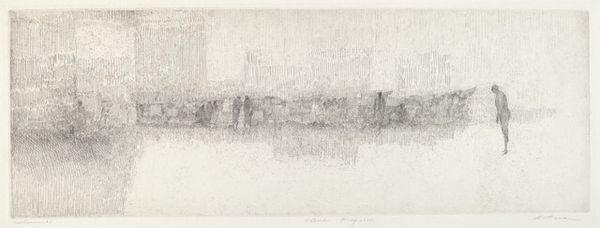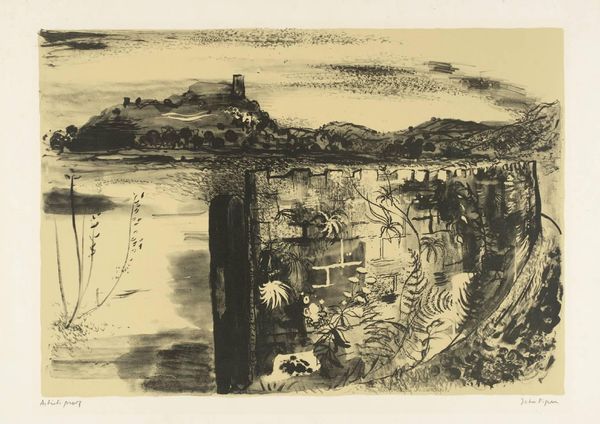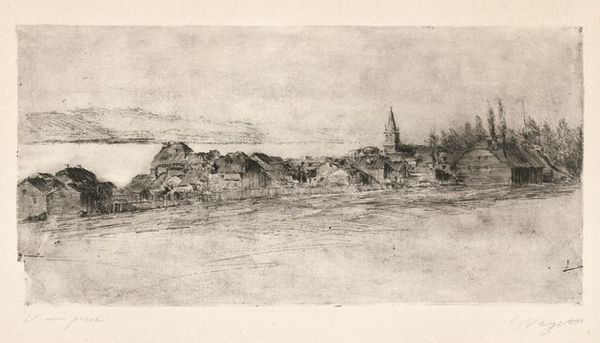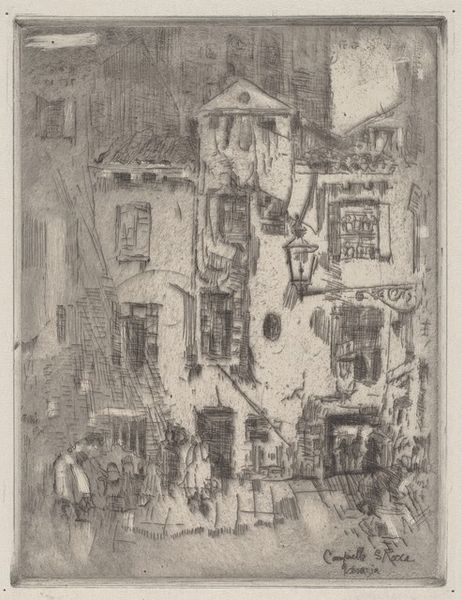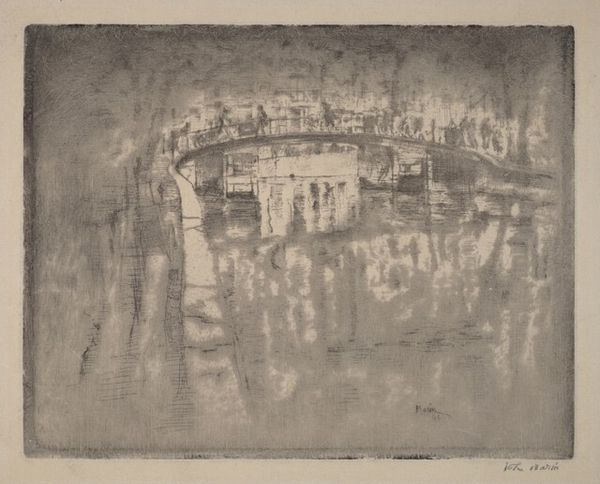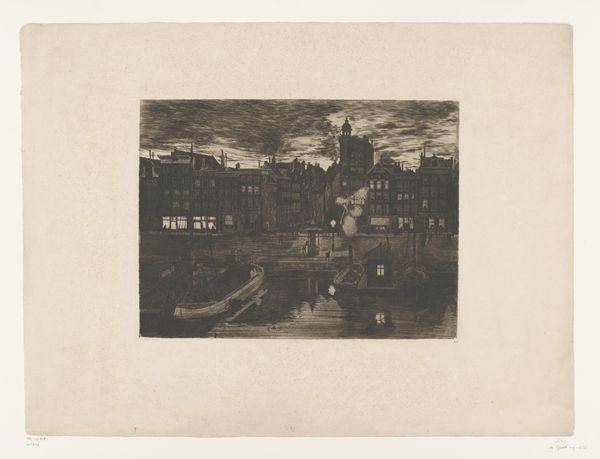
print, etching
# print
#
etching
#
cityscape
#
realism
Dimensions: plate: 59.9 x 84.5 cm (23 9/16 x 33 1/4 in.) sheet (irregular): 71 x 95 cm (27 15/16 x 37 3/8 in.)
Copyright: National Gallery of Art: CC0 1.0
Curator: Moishe Smith’s 1960 etching, “Firenze,” presents us with a view of the city of Florence, Italy. It's rendered in a tonal style with a focus on the city's architecture and the Arno River. Editor: Firenze. Just saying the name feels romantic! The piece looks aged, almost as though excavated from ancient soil. Is this really Florence or some dreamscape version, shrouded in the sepia tones of memory? Curator: That sepia feel likely comes from the etching process. It's a printmaking technique involving acid to create lines in a metal plate, lending itself well to textured and detailed urban scenes. Think of how this medium enabled wide distribution, allowing a global audience access to views of European landmarks. Editor: It makes me wonder about access, doesn't it? What did Smith feel walking those ancient streets, feeling the pulse of history thrumming in Italy, that maybe someone in Cleveland wouldn’t. I can feel my fingers itching for the plate. What secrets would that metal reveal? Curator: It’s interesting that you raise that point. Artists like Smith shaped America’s engagement with Europe. Think of how the post-war boom fueled art patronage, or even further back, how the Grand Tour fueled a particular imagination of European civilization, especially for elite audiences who traveled to witness it firsthand. Editor: It gives a feeling of the city, viewed with some haziness… is it the river surface blurred at the base? Look how those bridge arches cut solid arcs and frame shadow spaces and how everything, above and below, shimmers between the solidity of building and sky and the liquid, dissolving nature of memory. Curator: That might speak to how Smith uses tone to suggest atmospheric perspective. Lighter tones for the distant details, which reinforces a sense of depth in the image. Consider this was created at a moment of great interest in representing and experiencing sites of immense cultural production. Editor: So much history locked in stone and ink, which makes it a bit heartbreaking. Is that how you would say the etching makes you feel? Because for me, it's… hopeful! If these cities persist, immortalized even by simple scratches on metal, maybe so could my dreams. Curator: Indeed. The intersection of hope and ruin are quite palpable, speaking to how our relationship with the past and the creation of its narrative affects our current moment. Editor: An amazing piece. You leave looking at history so different to when you arrived! Curator: A fitting impression of art and historical intersection, wouldn't you agree?
Comments
No comments
Be the first to comment and join the conversation on the ultimate creative platform.
